
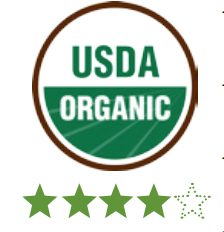
- USDA National Organic Program (NOP) sets regulations and labeling requirements.
- Verification guaranteed by annual unannounced or announced inspections, investigations of complaints, and enforcement penalties.
- 100% organic labeled products must contain only organically produced ingredients and processing aids not including water and salt.
- Organic ingredients are grown, handled, and processed without the use of pesticides or other synthetic chemicals and fertilizers.
- Bioengineering is not permitted, so that means no GE (genetically engineered) ingredients
- The USDA organic certification does allow for monoculture crop production.
- The organic certification does not represent the highest standard in animal welfare. In order to ensure high animal welfare it is best to purchase products where USDA organic is accompanied by a credible third-party animal welfare certification.
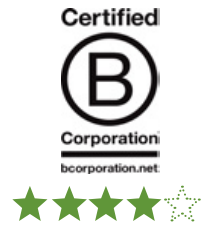
- The B Corp certification is a third-party certification verified by B Lab, a non-profit organization.
- B Corp ensures its members have high standards for environmental and social responsibility.
- B Corp companies must commit to take steps to improve the treatment of their employees, their community, and the environment.

- Independently verified by QAI (Quality Assurance International) through step-by-step benchmarks and inspections.
- This certification helps farmers transition from conventional to organic practices by creating a better market for their products while they are transitioning, allowing them to pay for the cost of going organic.
- Farms have three years under the label to become USDA certified organic, with each year having specific benchmarks farms must meet along the way.
- This will create more organic acreage by giving farmers the financial security to transition to better practices.
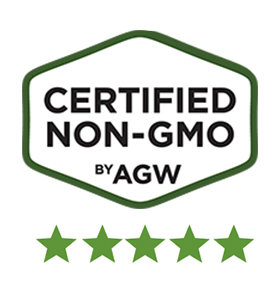
- Certified Non-GMO is a standard from the organization A Greener World (AGW), who is also behind the Animal Welfare Approved standard.
- This standard can not stand alone and can only be applied in addition to the Animal Welfare Approved standard.
- The Certified Non-GMO standard applies to livestock feed and inputs; ensuring a product is non-GMO throughout the entire supply chain.
- AGW requires regular testing.
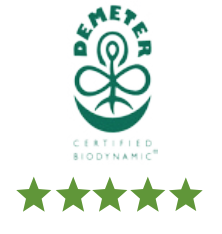
- This is a certification given by Demeter Association Inc. that requires farmers to apply and then pass inspections.
- Farmers must follow biodynamic principles, meaning the soil, plants, animals, and humans must work together as a holistic organism.
- On-farm recycling of nutrients and composting must be demonstrated. Farms must have minimal dependence on outside sources for synthetic fertilizers and pest control.
- Conscientious water conservation and the setting aside of land for biodiversity are practiced.
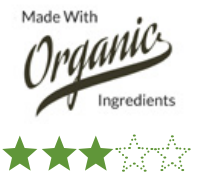
- USDA National Organic Program (NOP) sets regulations and labeling requirements.
- Verification guaranteed by annual unannounced or announced inspections, investigations of complaints, and enforcement penalties.
- Includes products that contain at least 70% organic ingredients.
- Remaining 30% of ingredients must be from USDA approved list
- Organic ingredients are grown, handled, and processed without the use of pesticides or other synthetic chemicals and fertilizers.
- Bioengineering is not permitted, that means no GE (genetically engineered) ingredients. The standard allows for monoculture crop production.
- The organic certification does not represent the highest standard in animal welfare. In order to ensure high animal welfare it is best to purchase products where USDA organic is accompanied by a credible third-party animal welfare certification.
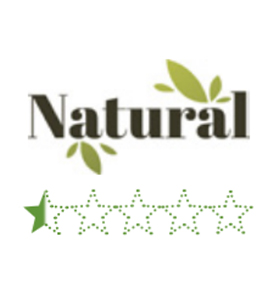
- The USDA states that products should not contain artificial ingredients or added colors and must be minimally processed. Manufacturers should define their use of the term on the package.
- Beyond the definition above (which is only applicable to meat products and is not verified) there is no set standard or enforcement mechanism.
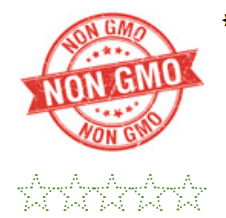
- Beware of non-GMO claims that are unverified. If a label has any GMO claims that are not verified by the USDA or a third-party verification the claim is not backed by any standard.
- It is best to look for a third-party verification, as the USDA does not include animal feed in its non-GMO requirements; meaning that an animal product can be considered non-GMO even if the animal was fed GMOs. The only way to ensure a product is non-GMO throughout its entire supply chain is through a third-party verification.
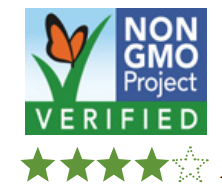
- Trustworthy third-party verified certification that guarantees products do not contain genetically engineered ingredients above a set threshold.
- GMO contamination must be below .25% for seeds, .9% for food and skin products, 1.5% for cleaning products and textiles, and 5% for animal feed and supplements.
- Compliance is ensured through analytical testing and corrective actions.
REMEMBER: When a food is labeled USDA organic that means it cannot be produced using genetic engineering (GE) or use ingredients derived from GE crops. Shop carefully when buying corn, soy alfalfa, sugar, canola, cotton, papaya, zucchini, and summer squash, as well as animal products, which most often come from animals that have been fed GE crops. Unless organic, these items are most likely derived from genetic engineering. Organic certification goes beyond non-gmo certification to address other key components of sustainable agriculture. However, organic does not require testing for the presence of GMOs. In order to ensure that there is not GE material in your food, you should purchase products that are organic and have a third-party non-GMO certification.
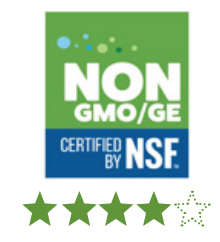
- Standards enforced by National Science Foundation (NSF) through unannounced audits.
- Products verified by NSF Non-GMO True North contain less than .9% GE contents or less than 5% for feed.
- Regulates feed for livestock, ensuring feed from GE crops is not used through an animal's lifecycle.
- Compliance is ensured through analytical testing and corrective accounts.

- USDA National Organic Program (NOP) sets regulations and labeling requirements.
- Verification guaranteed by annual announced or unannounced inspections, investigations of complaints, and enforcing penalties.
- Must contain at least 95% ingredients produced organically excluding water and salt. Remaining 5% if ingredients myst be from a USDA approved list.
- Organic ingredients are grown, handled and processed without the use of pesticides or other synthetic chemicals and fertilizers.
- Bioengineering is not permitted, product does not contain any GE ingredients.The organic certification does allow for monoculture crop production.
- The organic certification does not represent the highest standard in animal welfare. In order to ensure high animal welfare it is best to purchase products where USDA organic is accompanied by a credible third-party animal welfare certification.
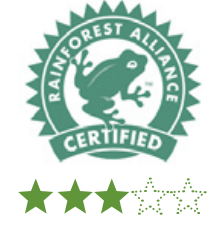
- Sustainable Agriculture Network (SAN) sets criteria for products to be certified.
- This certification emphasizes the yield of farmers and has no guaranteed price paid to farmers.
- Prohibits child labor and has an environmental component that addresses biodiversity, natural resources conservation, and sustainable agriculture.
- Allows multi-ingredient products to be certified without making it clear what percentage of ingredients are certified. Look for single ingredient products with this label, such as coffee beans.
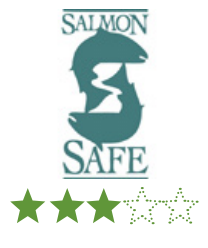
- The Salmon Safe label is put on products that are produced in a way that minimizes pollution in rivers and wetlands to protect native salmon.
- This includes limiting pesticides, improving irrigation practices, and planting trees by rivers.
- These products are verified by a third-party.
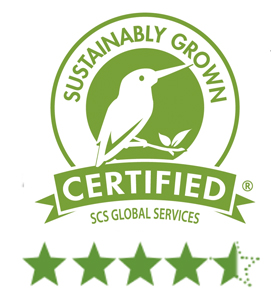
- Certified by SCS Global Services, a third-party organization that provides environmental and sustainability verification, certification, auditing, testing, and standards development.
- This certification addresses a broad range of environmental, social, and economic sustainability issues pertaining to crop production. (Note: this standard does not address animal husbandry or welfare).
- Specific environmental protection issues addressed include production system parameters, soil and water resources, air quality, climate change, ecosystem protection, energy efficiency, and waste management.
- Social responsibility requirements cover work agreements, wages and benefits, working hours, child labor, non-discrimination and freedom of association, human resource management, health and safety, and community relations.
- Economic sustainability issues addressed include business accounting and reporting, continuity and resilience, community economic engagement, and product quality and safety.
How we rated the labels
1. First, we considered whether the label evaluates a practice that could lead to measurable benefits. For example, organic labels are certifying practices that prohibit the use of synthetic chemicals and therefore seek to reduce impacts on the environment and human health. This leads to measurable benefits. By contrast, “farm fresh” is meaningless since it does not define practices that create any measurable benefits.
2. We then looked at whether the label represents a legal or regulatory standard that is clearly defined. For example, the USDA organic standards are clearly defined by the USDA, and those standards are publicly available. By contrast, the words “naturally raised” are not regulated, and are meaningless.
3. We then considered whether the standards set forth by the label are subjected to third-party certification or audit. The use of an outside certifier and/or auditor helps to prevent greenwashing that can easily occur with self-regulated labeling.
Labels that received the highest marks from Green America (4 to 5 stars) are those that scored the highest on the criteria above.






